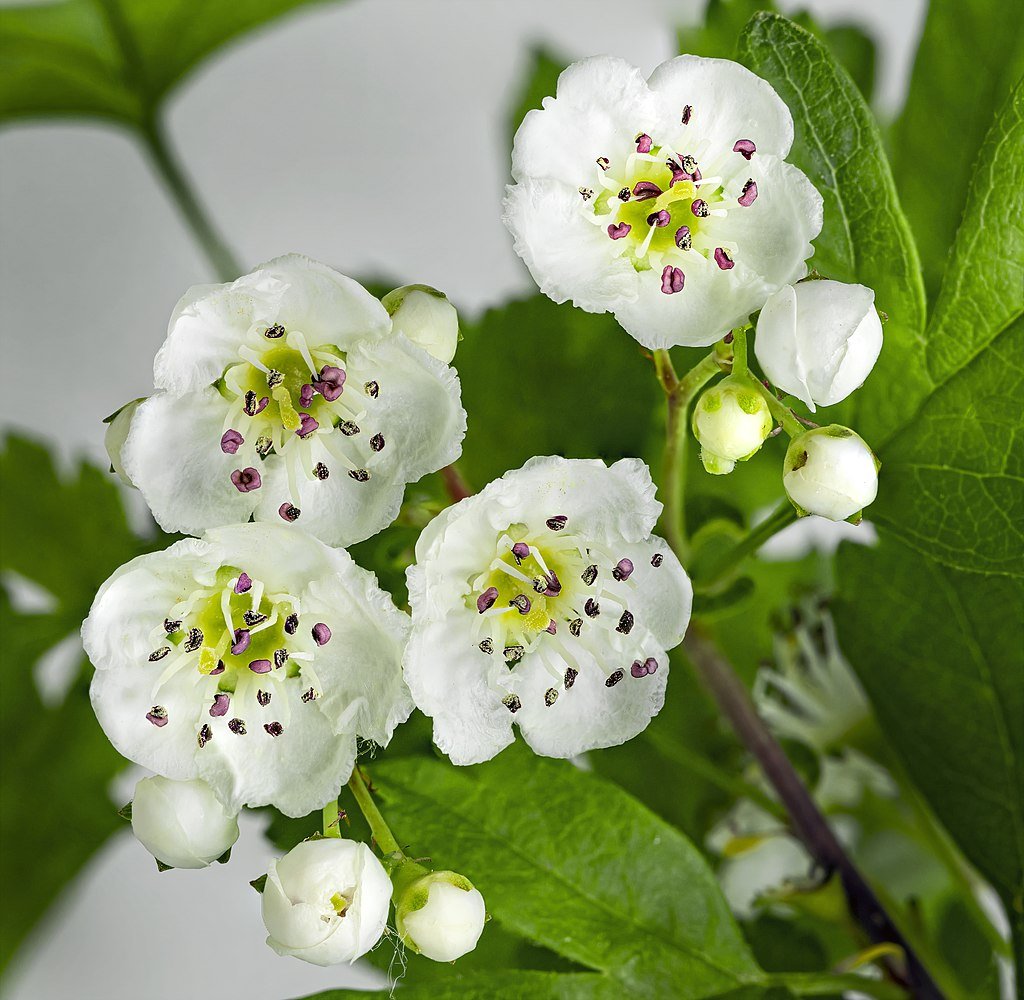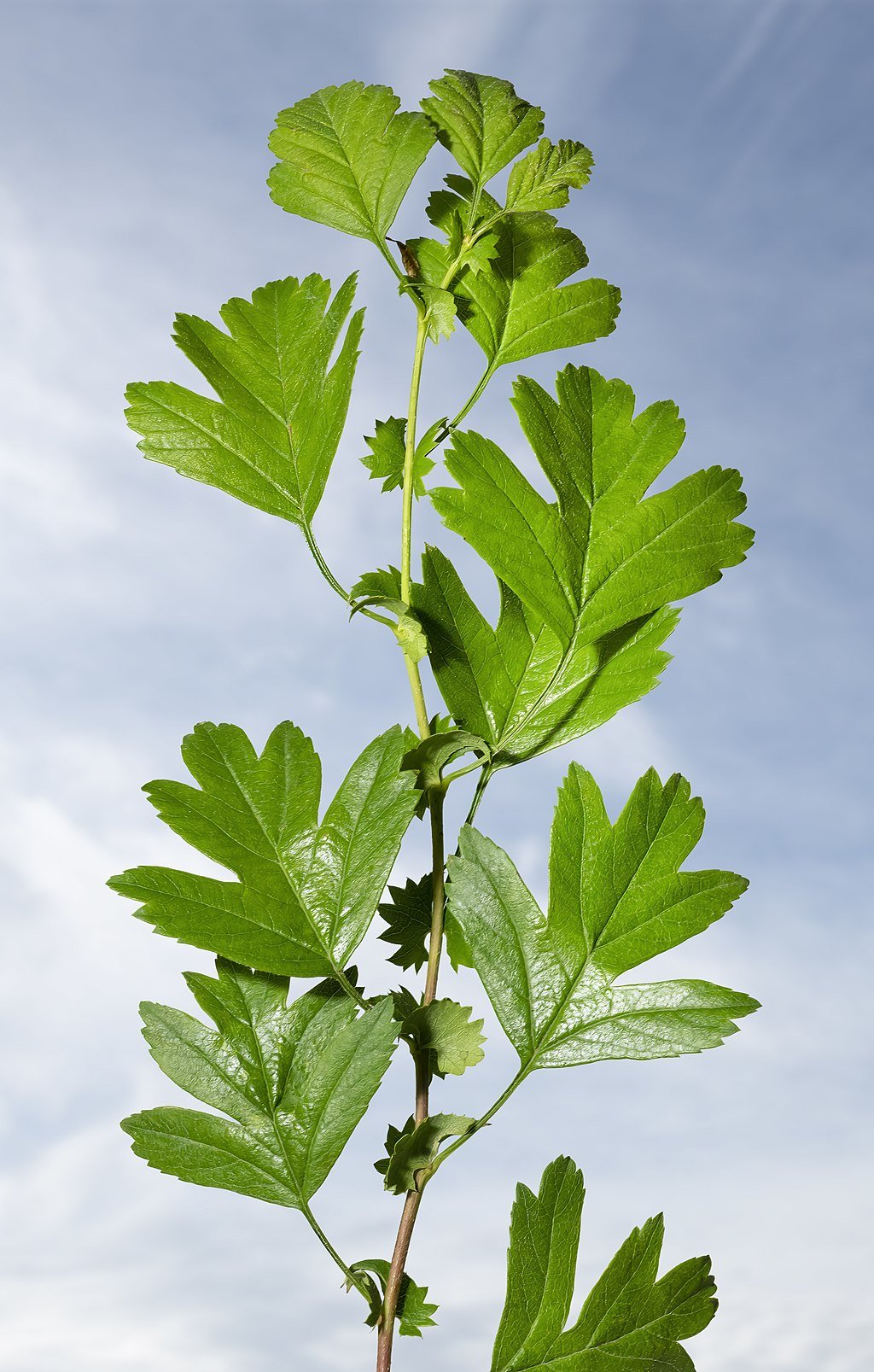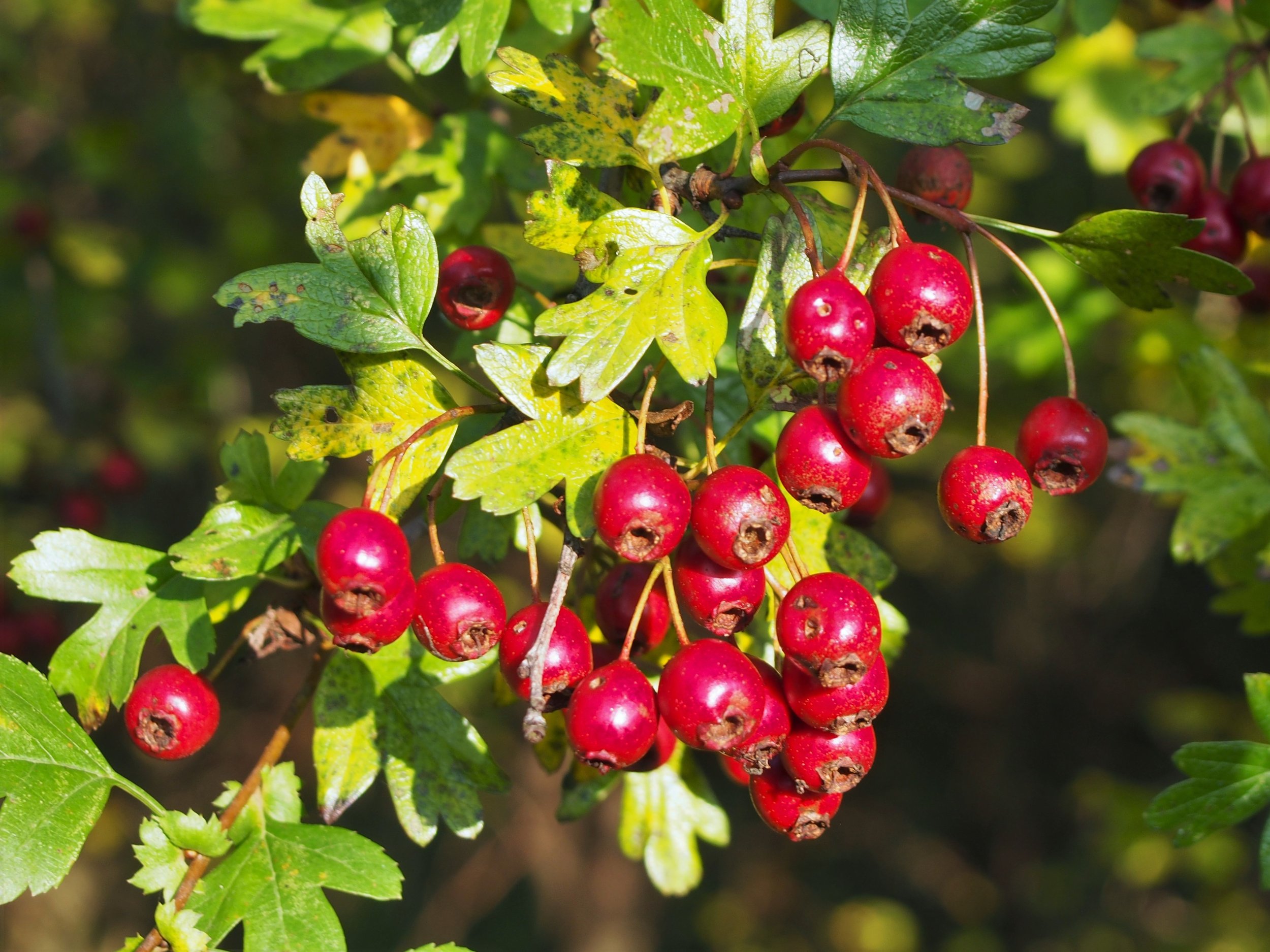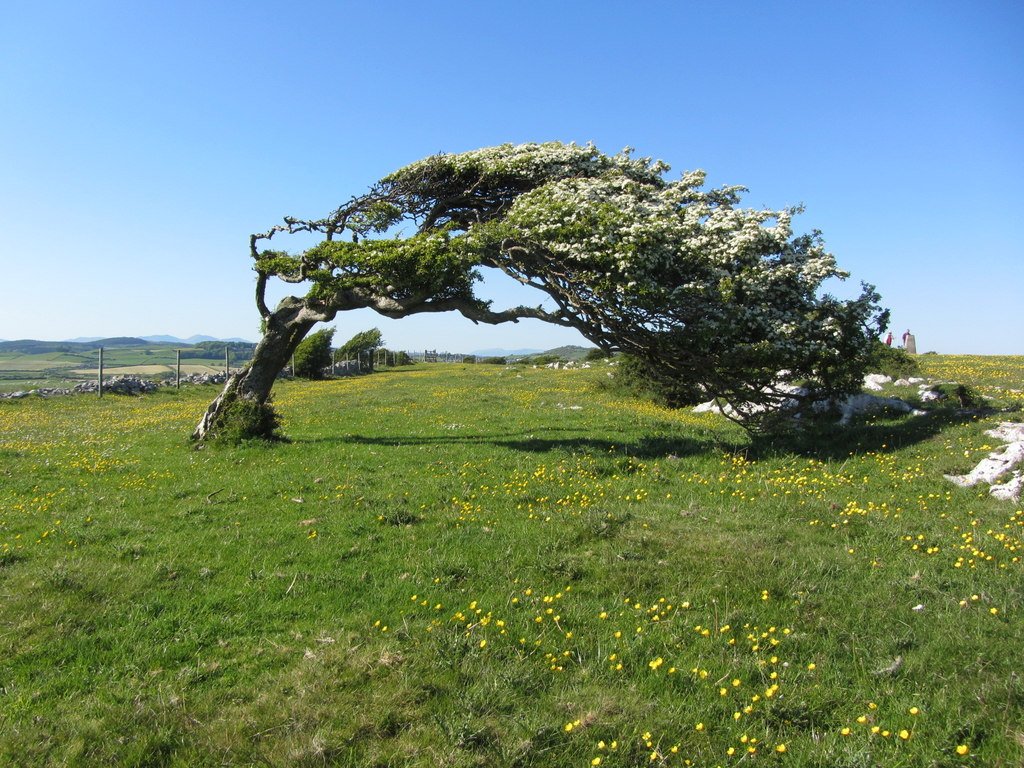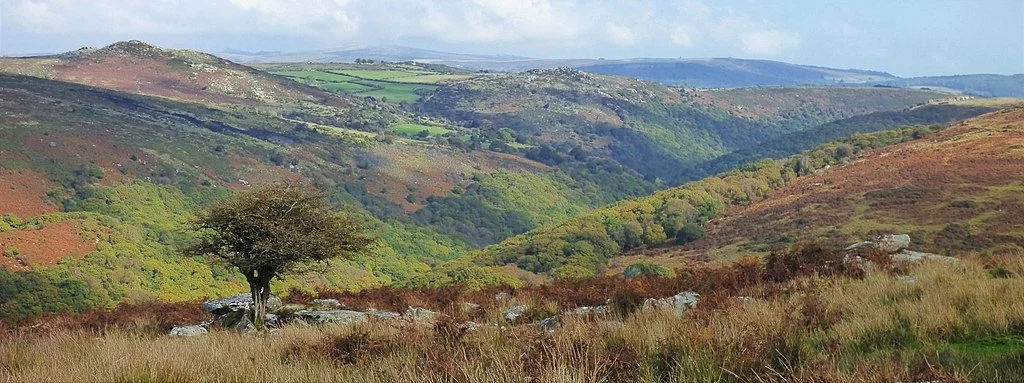A common sight across the UK, the Hawthorn (Crataegus monogyna) is at its most conspicuous during the month of May, when it bursts into profuse blossom; this phenomenon is so regular and emphatic that the Hawthorn is also commonly known as the May tree and has become particularly associated with May Day festivities.
Hawthorns are very hardy and able to withstand some serious weather, which can often result in their exhibiting some gnarled and interesting growth; wind-sculpted Hawthorns can be found across the UK, and such a tree was the 2021 winner of the UK Tree of the Year competition! Hawthorns can reach up to 15 metres in height, although they are often smaller than this, and have a dense and thorny crown. The leaves are small and toothed, and the flowers that burst into life in the spring are small, white and delicate - despite emitting a strong and sometimes quite unpleasant smell. In the autumn the trees produce clusters of bright red haws (hence, “haw-thorn”) which are very popular with birds and smaller mammals. They make excellent and secure hedges and can comfortably adapt themselves to a variety of growing conditions.
Since Celtic times the Hawthorn has been associated with the coming of spring, and in particular with May Day itself. Boughs of Hawthorn in bloom were used to decorate maypoles and gardens, although there was a strong superstition against actually bringing the flowers into the house. This might be due to their powerful smell, which has a distinct scent of animal decay and can quickly and emphatically fill a house, let alone a room! Despite this, Hawthorns themselves have long been considered symbols of abundant fertility and the return of their flowers every year was considered a good omen.
With its heavy pollen and autumnal festoons of haws, Hawthorns are hugely important to wildlife and can greatly promote local biodiversity. Several species of moth depend on the Hawthorn for its main food source, ands dormice, bees and other pollinators, birds and other small mammals are all common visitors throughout the season. As mentioned above it is a fantastic hedging plant for both privacy and for encouraging and developing wildlife corridors. Hawthorn wood can be good for carving as it is strong and close grained, and the leaves, flower buds and fruits can all be eaten the leaves and flower buds raw and the haws after preparation and cooking. It also makes excellent, hot-burning fire wood.
Hawthorns can be found all across Devon, both in the wild and in domestic settings, but for the more dramatic and windswept specimens you will need to head to the moors. Both Dartmoor and Exmoor have a plentiful population of Hawthorns in a range of sizes and contortions, and their dramatic look makes them interesting additions to the landscape throughout the year; once you start looking out for them, you’ll see them everywhere!
An autumnal Hawthorn overlooking the moors from Combestone Tor.
Picture Credits:
Linus Geffarth, 10th May 2022
https://unsplash.com/photos/F_Lpo8YpsW4
Didier Descouens, 27/04/2021
https://commons.wikimedia.org/wiki/File:(MHNT)_Crataegus_monogyna_-_flowers_and_buds.jpg
Didier Descouens, 27/04/2021
https://commons.wikimedia.org/wiki/File:(MHNT)_Crataegus_monogyna_-_Leaves_and_stipules.jpg
Agnieszka Kwiecien, 25/10/2020
Colin Park, 25th May 2012
Mark AC Photos, 9th October 2018
https://commons.wikimedia.org/wiki/File:Dartmoor_(44325074585).jpg

